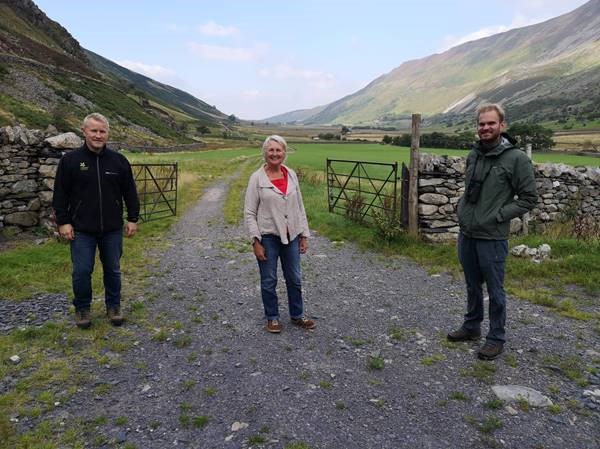![]()
Twite / Llinos y Mynydd a small, brown finch closely related to the linnet with a small population in North Wales.
Welsh Country is so aware of the incredible variance of animals, birds, flora and fauna across Wales. In addition that Wales is an important habitat to so many of those species.
It is a pleasure to be made aware of one such Llinos y Mynydd (Twite) as a bird that nests across northern Europe and central Asia by Sian Gwenllian MS.
In Wales, a small number of this species nest in Snowdonia, but over several decades numbers have fallen dramatically.
Nevertheless, conservation efforts are continuing to conserve this rare bird and its breeding habitat. In addition, the BTO Cymru has been colour ringing the birds to understand their movements.

The site at Nant Ffrancon was recently visited by Siân Gwenllian MS, who is the area’s Member of the Senedd as well as being the Species Champion for Llinos y Mynydd (Twite).
Upon visiting Nant Ffrancon, Siân Gwenllian MS said;
“Despite the fact that the Llinos y Mynydd (Twite) population has been diminishing for years, it seems that the tide is turning in the Ogwen valley, following action by RSPB Cymru, local farmers and the National Trust in Nant Ffrancon.
It was wonderful to visit the Llinos y Mynydd’s (Twite’s) habitat in Nant Ffrancon, and to celebrate Wales’ biodiversity.
I was proud to have recently supported Plaid Cymru’s motion, which passed on the floor of the Senedd to declare a nature emergency and strengthen laws for nature including targets.”
Dewi Roberts, Lead Ranger at Y Carneddau for the National Trust expressed his hope that the working partnerships would lead to a significant increase in the numbers of this rare bird in the Ogwen Valley.
Jack Slattery, RSPB Cymru Conservation Officer, added:
“As part of the Carneddau Landscape Partnership scheme funded by the National Lottery Heritage Fund, we are working collaboratively with land managers, conservation organisations and other members of the local community to provide more suitable foraging habitat for Twite (Llinos y Mynydd) and raise their profile.
This is one of many exciting projects being developed through this scheme to conserve the natural and cultural heritage of the Carneddau.”
For those of you that are not fully aware of the Twite (Llinos y Mynydd) the RSPB has a page on the bird at https://www.rspb.org.uk/birds-and-wildlife/wildlife-guides/bird-a-z
A fuller text comes from Wikipedia part of which follows…
The Twite (Linaria flavirostris) is a small brown passerine bird in the finch family Fringillidae.
It is similar in size and shape to a linnet, at 13 to 13.5 centimetres (5.1 to 5.3 in) long. It lacks the red head patch and breast shown by the linnet and the redpolls. It is brown streaked with black above, and a pink rump. The underparts are buff to whitish, streaked with brown. The conical bill is yellow in winter and grey in summer. The call is a distinctive twit, from which its name derives and the song contains fast trills and twitters. Twites can form large flocks outside the breeding season, sometimes mixed with other finches on coasts and salt marshes. They feed mainly on seeds.
The Twite breeds in northern Europe and across the Palearctic to Siberia and China. Treeless moorland is favoured for breeding. It builds its nest in a bush, laying 5–6 light blue eggs. It is partially resident, but many birds migrate further south, or move to the coasts. It has declined sharply in parts of its range, notably in Ireland.
In the UK, the Twite is the subject of several research projects in the Pennines, the Scottish Highlands and the North Wales and Lancashire coastlines. Records show that the birds to the east of the Pennine hills move to the southeast coast in winter and those to the west winter between Lancashire and the Hebrides. The Welsh population winters almost exclusively in Flintshire. Ringing data has revealed that Twite breeding in different parts of Britain use different non‐breeding areas, and that non-breeding areas of British Twite do not overlap with non-breeding areas of continental Twite.
Other recent Welsh Nature news www.welshcountry.co.uk/vincent-wildlife-trusts-vwt-pine-marten-recovery-project/





